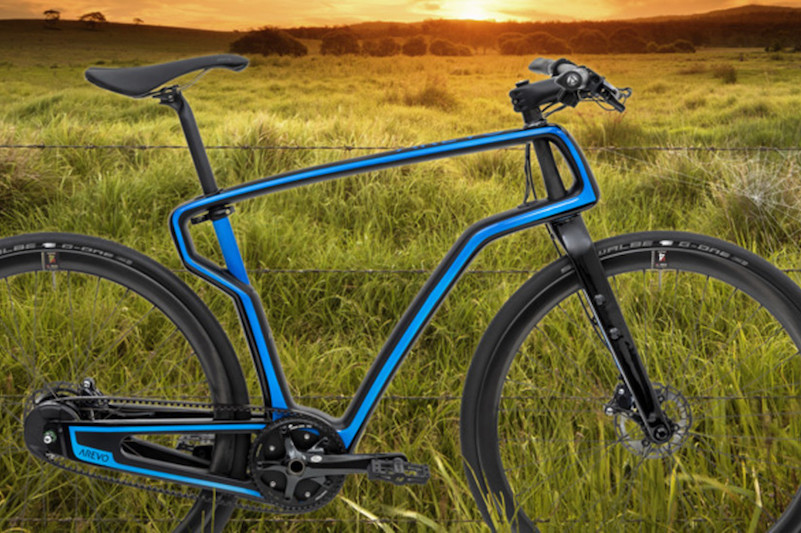A company backed by the CIA that calls itself Arevo is hoping to lead a revolution in manufacturing that uses 3D printing to build products in a more efficient and cost-effective manner. The Silicon Valley, California startup recently picked up $12.5 million in funding to help pursue this goal and has revealed an impressive proof-of-concept product to help demonstrate its capabilities. That product is a carbon fiber bike frame that could give us a glimpse of the future for the cycling industry.
According to Arevo, its bike frame is the first to be 3D printed using carbon fiber. The company uses 3D printer technology, paired with a custom-built robotic arm and web-based software, to create products made from proprietary raw materials. The robot arm is able to print out shapes in a single pass using a thermoplastic material that is melted into strands of carbon fiber that helps bind everything together. The end result is a bike frame that costs about $300 to make, which is considerably less than what most bike manufacturers pay.

When most cycling companies set out to create a new carbon fiber frame for their latest bicycles, they must first create a mold of what the frame will look like. That mold typically costs between $60,000 and $100,000 depending on a number of variables. Once that mold is built, workers fill the mold with individual layers of carbon fiber, which are combined with resin, into it. The mold is then placed in an industrial oven to bake the resin into the carbon to bind everything together. The entire process takes a great deal of time and is fairly labor intensive, making a carbon fiber bike frame very lightweight, but expensive.
Arevo, which was initially funded by In-Q-Tel, a nonprofit venture capital firm backed by the CIA, says that it can scale up its manufacturing process for use in a number of different projects. While the carbon fiber bike frame is an indication of what the company’s hardware and software are capable of, it can also reportedly build products as large as the fuselage of an aircraft. It can also 3D print parts for space vehicles and other complex machines, too.







